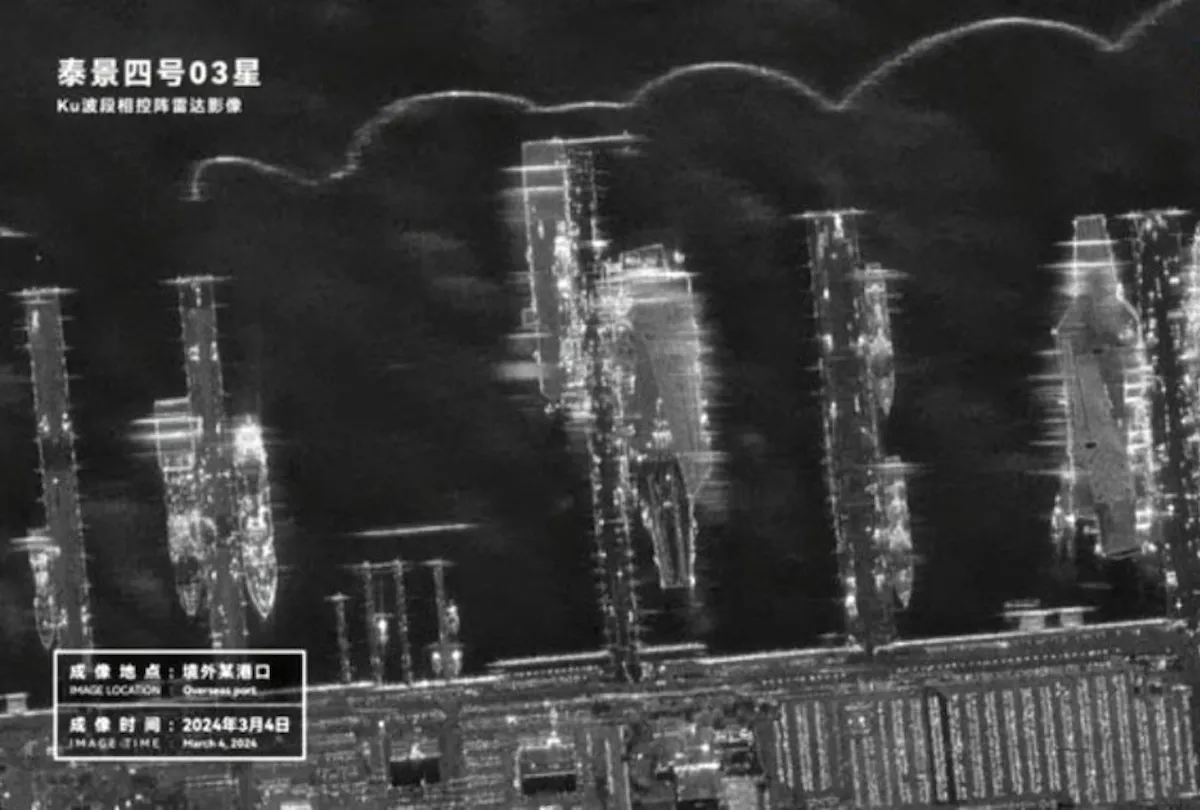In a recent display of technological prowess, China has reportedly launched satellites that not only violate International Telecommunication Union (ITU) regulations but also the speed in which this satellite was launched was unmatched.
This development has become a source of embarrassment for the US National Reconnaissance Office (NRO) and the intelligence community, given their historically resistant stance towards commercial Synthetic Aperture Radar (SAR) technologies, leaving the US strategically weakened. China, in contrast pumped capital into their “commercial” SAR industry, forcing innovation in the market, moving their SAR technology very fast.
The intelligence community, has been telling congress they have “SAR handled and there is, no need.” Now, IC SAR requirements are stale and China is moving very fast and there is no way, to replicate this speed with an American prime.
China’s Taijing-4 03 radar imaging satellite, reportedly part of a five-satellite constellation and ostensibly for scientific research, has been capturing intricate details of US naval assets. Images from the satellite showing detailed layouts of significant naval bases like Norfolk have raised concerns about the satellite’s true capabilities and intentions. According to reports, this satellite uses advanced AI processors that enable rapid detection and identification of maritime and aerial assets, which are capabilities traditionally associated with high-end military satellites.
The situation is further compounded by the US’s lag in adopting commercial SAR technologies. While China integrates AI to enhance its satellite capabilities, the US has been slow to embrace these advancements due to a cautious approach by the NRO towards commercial SAR. This hesitance has potentially left gaps in the US’s ability to monitor and respond to international threats efficiently.
Congress is now being pressured to intervene. The intelligence community may soon be mandated to fund and support commercial SAR initiatives to close the technology gap with China. Such a move is seen as crucial to ensuring that the US does not fall behind in the critical area of satellite surveillance and reconnaissance.
The implications of China’s advancements are profound, not just in terms of surveillance but also in military strategy. Enhanced satellite capabilities allow for more effective tracking and targeting, which is essential in modern asymmetric warfare where traditional large-scale platforms, like aircraft carriers, are becoming more vulnerable. China’s ability to deploy such advanced satellites is seen as a direct challenge to US dominance in satellite technology and a clear signal that the US must revise its strategy regarding commercial SAR and overall space defense capabilities.
As China continues to launch satellites that seemingly flout international norms with little repercussion, the US finds itself at a pivotal point. The need for advanced, commercially developed SAR capabilities has never been more apparent, and the US will need to act swiftly to maintain its strategic edge in an increasingly contested space domain.

